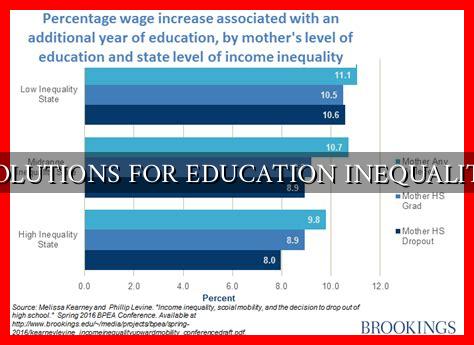-
Table of Contents
Solutions for Education Inequality
Education is often hailed as the great equalizer, providing individuals with the tools and knowledge necessary to succeed in life. However, education inequality remains a significant challenge in many parts of the world, with disparities in access to quality education persisting across socioeconomic lines. In this article, we will explore some of the key solutions to address education inequality and ensure that all individuals have equal opportunities to learn and thrive.
Investing in Early Childhood Education
One of the most effective ways to tackle education inequality is by investing in early childhood education. Research has shown that children who have access to high-quality early childhood education programs are more likely to succeed academically and socially later in life. By providing all children with a strong foundation in their formative years, we can help level the playing field and reduce disparities in educational outcomes.
Equitable Funding for Schools
Another critical aspect of addressing education inequality is ensuring that schools receive equitable funding.
. In many countries, schools in low-income communities are often underfunded, leading to inadequate resources and lower-quality education. By redistributing resources to schools in need and implementing funding formulas that prioritize equity, we can help bridge the gap between affluent and disadvantaged schools.
Teacher Training and Support
High-quality teachers play a crucial role in shaping students’ educational experiences. Investing in teacher training and support programs can help ensure that all students have access to well-qualified and motivated educators. By providing teachers with the tools and resources they need to succeed, we can improve educational outcomes for all students, regardless of their background.
Addressing Systemic Barriers
Education inequality is often perpetuated by systemic barriers that prevent certain groups of students from accessing quality education. These barriers can include discriminatory policies, lack of support for marginalized communities, and limited opportunities for advancement. By addressing these systemic issues and promoting inclusivity and diversity in education, we can create a more equitable and inclusive learning environment for all students.
Conclusion
Education inequality is a complex and multifaceted issue that requires a comprehensive approach to address. By investing in early childhood education, ensuring equitable funding for schools, providing teacher training and support, and addressing systemic barriers, we can work towards creating a more equitable education system that benefits all students. It is essential that policymakers, educators, and communities come together to prioritize education equality and provide every individual with the opportunity to reach their full potential.





